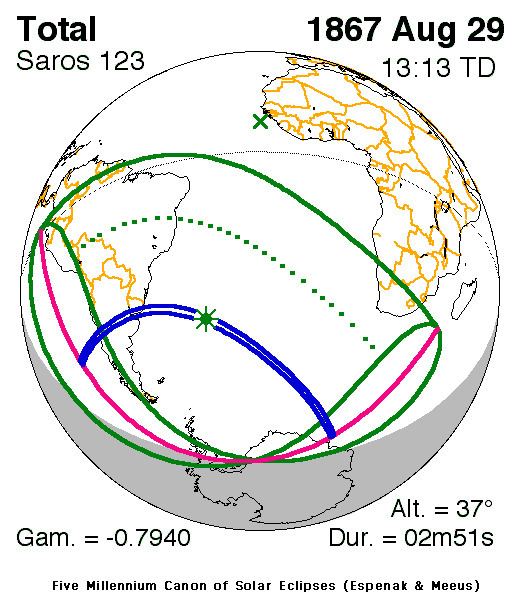Nature Total Magnitude 1.0344 Max. width of band 189 km (117 mi) Start date August 29, 1867 | Gamma -0.794 Duration 171 sec (2 m 51 s) Greatest eclipse 13:13:07 | |
 | ||
A total solar eclipse occurred on August 29, 1867. A solar eclipse occurs when the Moon passes between Earth and the Sun, thereby totally or partly obscuring the image of the Sun for a viewer on Earth. A total solar eclipse occurs when the Moon's apparent diameter is larger than the Sun's, blocking all direct sunlight, turning day into darkness. Totality occurs in a narrow path across Earth's surface, with the partial solar eclipse visible over a surrounding region thousands of kilometres wide. Totality occurred across central Argentina and the southern Atlantic ocean.
José J. Vergara and Luis Grosch observed the eclipse from a small hill close to Santiago.
Related eclipses
It is a part of solar Saros 123.
References
Solar eclipse of August 29, 1867 Wikipedia(Text) CC BY-SA
